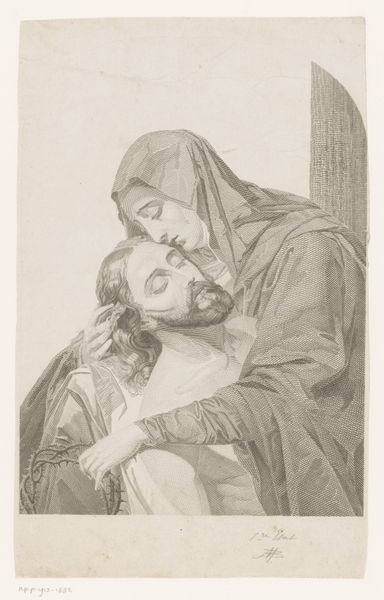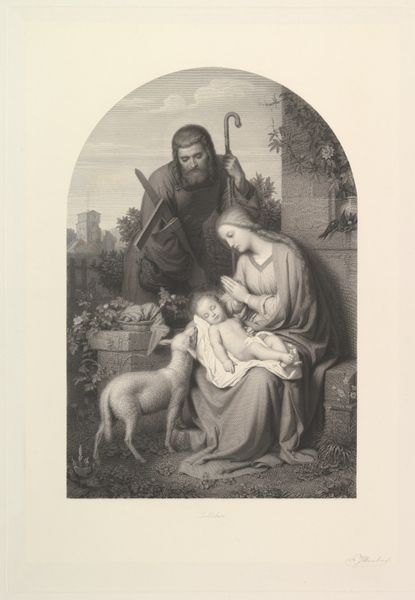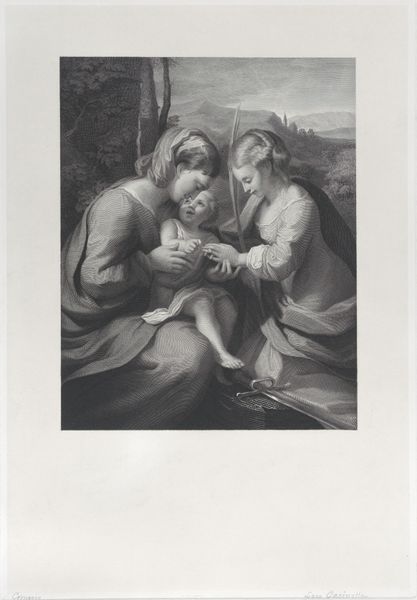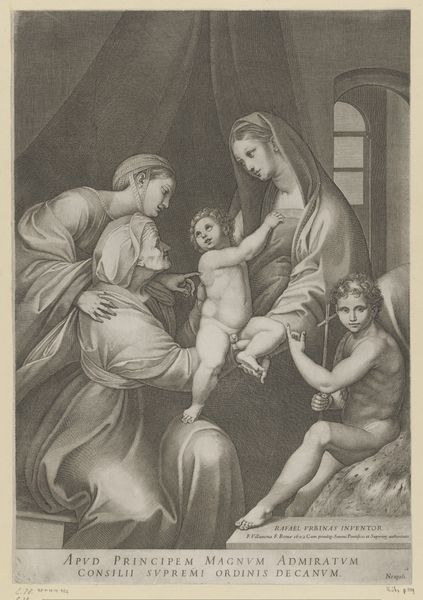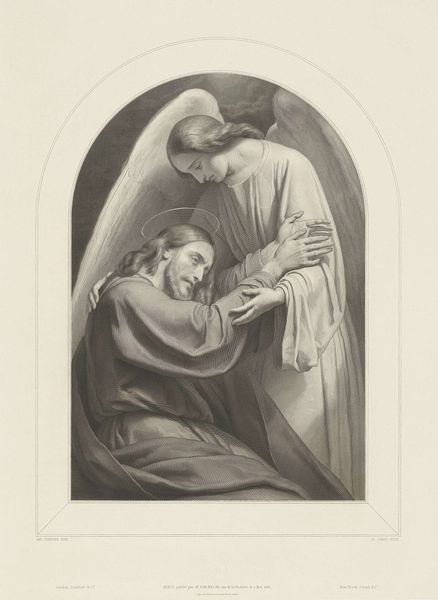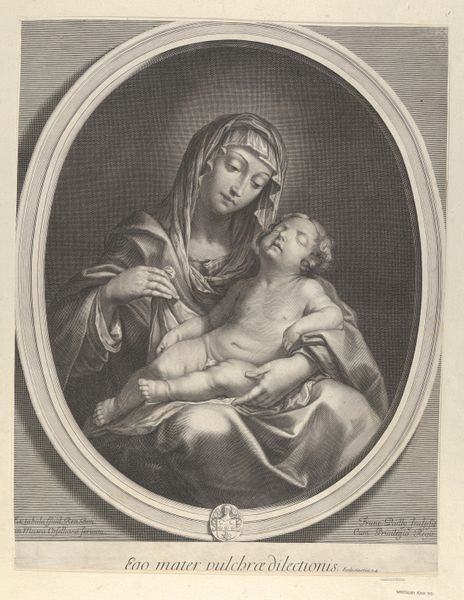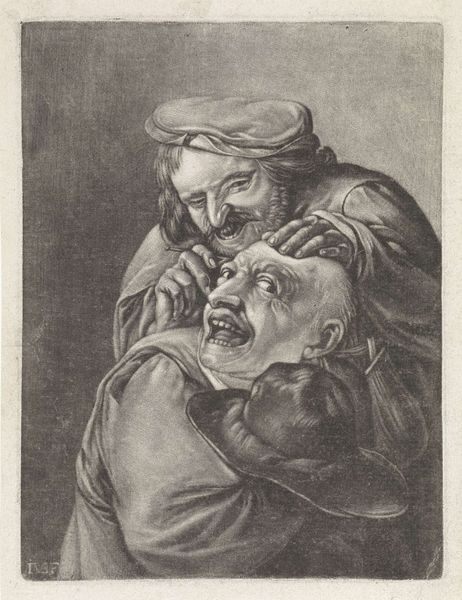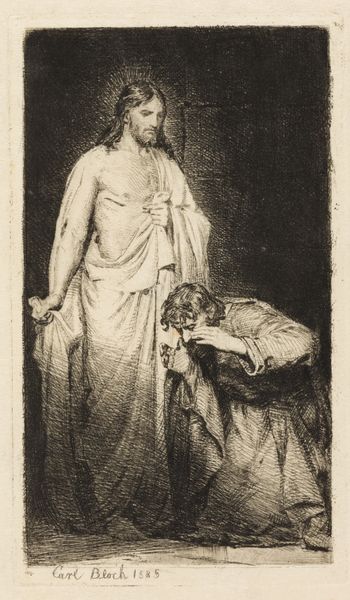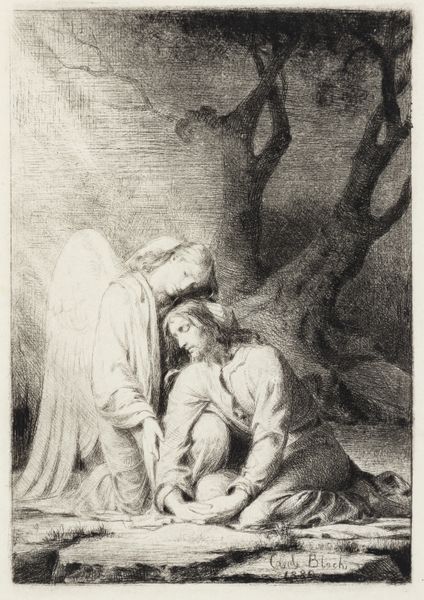
Maria als Mater Dolorosa met de overleden Christus in haar armen 1831 - 1890
0:00
0:00
jeanbaptistepierremichiels
Rijksmuseum
Dimensions: height 423 mm, width 298 mm
Copyright: Rijks Museum: Open Domain
Curator: The somber mood hits you immediately, doesn't it? All in grays and whites; such grief rendered in monochromatic tones. Editor: Indeed. This is "Maria als Mater Dolorosa met de overleden Christus in haar armen" which roughly translates to "Mary as the Mother of Sorrows with the deceased Christ in her arms." It's an engraving made sometime between 1831 and 1890 by Jean Baptiste Pierre Michiels. It is currently housed here at the Rijksmuseum. Curator: The composition, with its strong emphasis on line and chiaroscuro, amplifies that emotional intensity. Observe how the light delicately illuminates the faces, particularly the Virgin Mary’s, directing our gaze. Editor: It evokes established iconographies depicting the Virgin Mary lamenting over Christ, common themes during periods of religious reform across Europe, when artistic representation was under scrutiny and re-evaluation. Engravings such as this enabled wider accessibility and promoted the devotion of Mater Dolorosa during specific religious movement that placed emphasis on personal experiences of faith. Curator: Precisely. And note the economy of line. The artist manages to convey profound sadness through the mere tilt of a head, the fall of a drape. See, the use of line does not delineate the image into compartments, but guides our sight and draws it again and again. The starkness amplifies that emotional tension. Editor: It is very typical of its time, reflecting both a baroque drama and medieval emotional intensity—an effort perhaps to maintain a religious visual language amidst modern secularization? It would make an interesting study to delve deeper into Michiels' biography. Curator: Absolutely. One finds here not just religious art but a distillation of human grief, crafted with remarkable skill and structural awareness. The contrast does provide emotional depth here. Editor: Ultimately, it becomes more than an iconic or artistic exercise, touching something deeper and perennial, it becomes a very interesting window through society through time, when religion was lived out vividly.
Comments
No comments
Be the first to comment and join the conversation on the ultimate creative platform.
